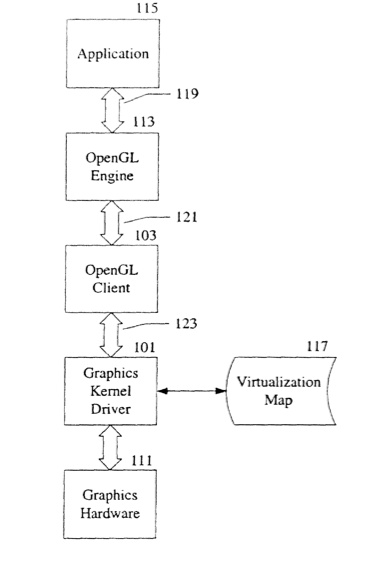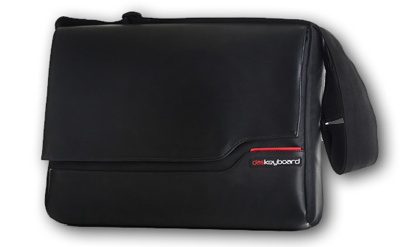A new patent (number 8089488) at the U.S. Patent & Trademark Office shows that Apple is eyeing ways to make it easier for hardware and software to share graphics resources.
Via the patent — entitled “virtualization of graphics resources” — graphics resources are virtualized through an interface between graphics hardware and graphics clients. The interface allocates the graphics resources across multiple graphics clients, processes commands for access to the graphics resources from the graphics clients, and resolves conflicts for the graphics resources among the clients. The inventors are John Stauffer, Bob Beretta and Ken Dyke.
Here’s Apple’s background and summary of the invention: “A graphics kernel driver typically interfaces between graphics client drivers and graphics hardware to assign graphics resources to each client driver and to administer the submission of graphics commands to the graphics hardware. Each client driver has explicit knowledge of the graphics resources it is assigned and references the resources in its commands using the physical address of the resources.
“As more sophisticated graphics features are developed, the demand for graphics resources is ever increasing but the graphics resources are limited by the graphics hardware and other system constraints. The assigned resources cannot be shared among clients because the graphics hardware is not designed to handle resource contention among the clients. Additionally, the client drivers are required to manage their own internal resource conflicts. For example, they must handle their attempts to use more than available graphics memory.
“Graphics resources are virtualized through an interface between graphics hardware and graphics clients. The interface allocates the graphics resources across multiple graphics clients, processes commands for access to the graphics resources from the graphics clients, and resolves conflicts for the graphics resources among the clients.
“In one aspect, the interface is a graphics kernel that assigns an identifier to a resource when allocated by a graphics client and the client uses the identifier instead of an address for the resource when requesting access to the resource.
“Because the native command structure for the graphics hardware is unaffected by the virtualization, neither the applications nor the hardware require modification to operate in conjunction with the present invention. Furthermore, because the virtualized resources appear as unlimited resources to the graphics clients, the clients can be simplified since, for example, they are no longer required to de-fragment or compact their assigned resources.
“The present invention describes systems, methods, and machine-readable media of varying scope. In addition to the aspects of the present invention described in this summary, further aspects of the invention will become apparent by reference to the drawings and by reading the detailed description that follows.”
Also the U.S. Patent & Trademark Office has granted Apple a patent (number 8090026) for “using order difference for calculating motion vector.” A method and apparatus for variable accuracy inter-picture timing specification for digital video encoding is disclosed.
Specifically, the present invention discloses a system that allows the relative timing of nearby video pictures to be encoded in a very efficient manner. In one embodiment, the display time difference between a current video picture and a nearby video picture is determined. The display time difference is then encoded into a digital representation of the video picture. In a preferred embodiment, the nearby video picture is the most recently transmitted stored picture.
For coding efficiency, the display time difference may be encoded using a variable length coding system or arithmetic coding. In an alternate embodiment, the display time difference is encoded as a power of two to reduce the number of bits transmitted. The inventors are Barin Geoffry Haskell, David William Singer, Adriana Dumitras and Atel Puri.
— Dennis Sellers



